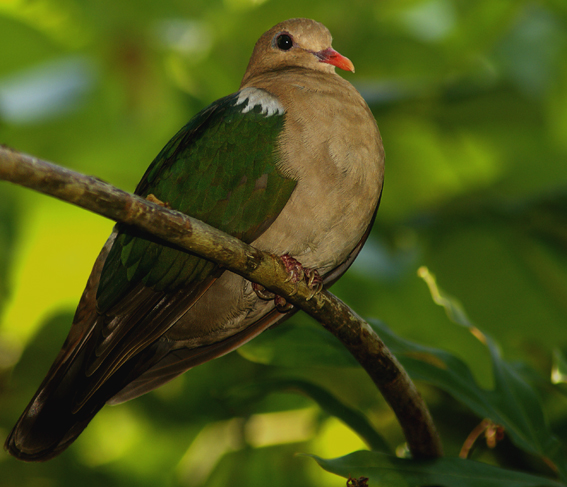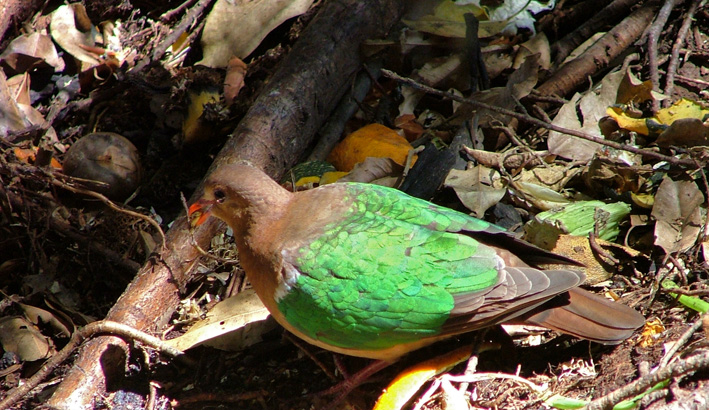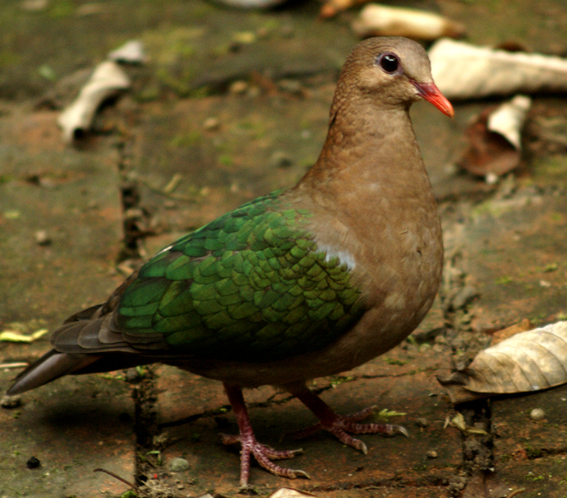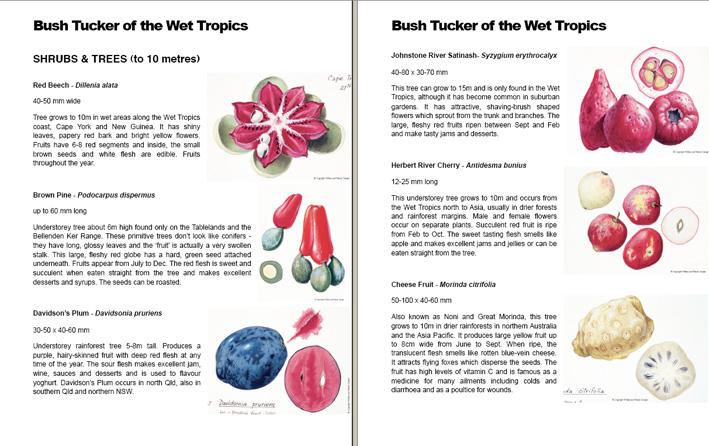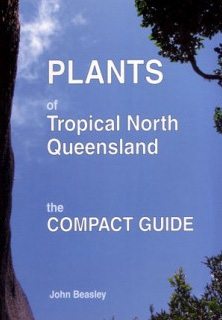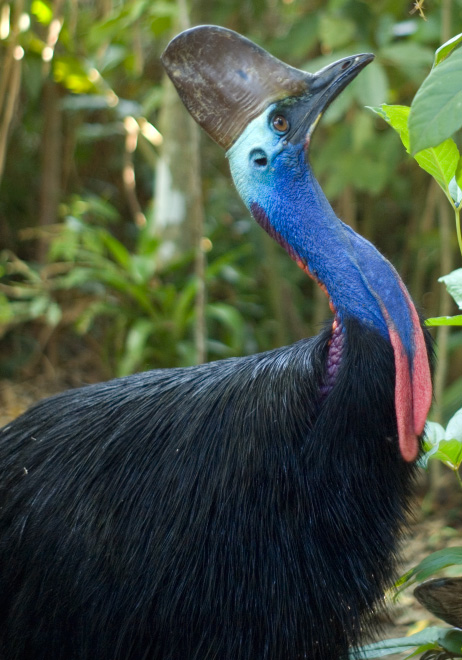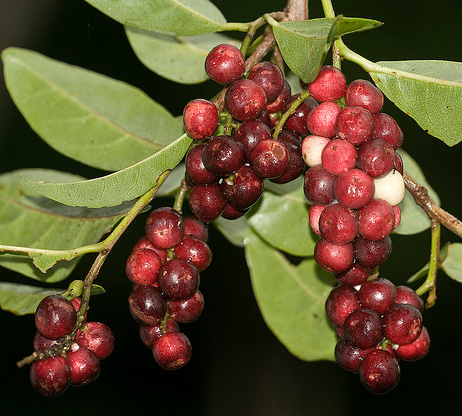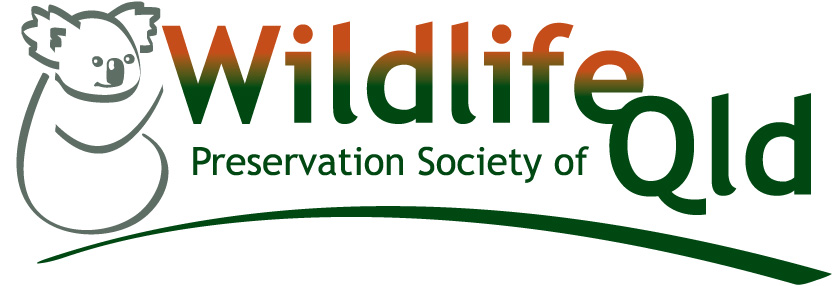| WILDWATCH by ANNE (WILKINSON) & LAWRIE MARTIN At last green-winged pigeons are back in the Wildwatch garden. Possibly we have simply not noticed them or were not there at the right time, but these beautiful birds, also known as emerald doves, enjoyed a fairly high profile here until Cyclone Yasi when they disappeared. We had not seen them since. |
As all too many residents are aware weeds are proliferating since the cyclone, both because there is so much extra open space for the plants to colonise and presumably, because the strong wind spread the pest seeds everywhere.
| Green-winged pigeons are easily identified because of their shiny green wings and the white patch on each shoulder. The head and body are fawn to brown and the beak and legs red. They are lowland birds of both rainforest and sclerophyll woodland, but are also often seen on cleared country or regrowth forest. Both male and female incubate the eggs, the female at night at the male during the day. There is obviously no sexism in the green-winged pigeons’ world. |
| It is always nice to be given plants, and this week the Wildwatch scrub was increased by two, both gifts, both beautiful rainforest trees, a quandong and a river cherry. There is already a mature river cherry on the property but it is not easily reached, so we were delighted to be able to plant this one where access is better. Not near the house though, as this beautiful tree, properly called Syzygium tierneyanum, will reach 25 metres. |
| However, it is not only people who value river cherries. As usual when something interesting happens, which this gift certainly is, we consult our reference library to find out more. We knew cassowaries eat both river cherries and quandongs, but John Beasley’s excellent little book Plants of the Tropical North tells how many other creatures gain value from this beautiful tree. He writes that the results from the study of one flowering tree – and this is even before it fruits – revealed that seven species of birds, nine species of butterfly, 12 kinds of moths, two kinds of bees and two kinds of ants visited the tree. |
| The river cherry is not only a beautiful, fairly compact species giving excellent shade, but it is highly decorative. Its flowers can be either red or white and its fruit is bright red. If there is a negative about this tree, it is that to most human tastes the fruit is sharp rather than sweet, something many animals don’t seem to bother about. | Mr Beasley also mentions cassowaries eat the fallen fruit. Yes, they do, but when I accessed our river cherry to pick fruit last year I found its bright fruit had been stripped to cassowary height, which also is my height, so all I could do – apart from carry a ladder deep into the scrub which I was not prepared to do, was leave it to the creatures who obviously enjoy it. They were welcome, I felt. |
| Wildwatch is provided by the Tully branch of the Wildlife Preservation Society of Queensland: enquiries to 4066 5466 or 4066 5650. To contact the emergency 24-hour Wildcare hotline, phone 4068 7272. Phone DERM on 1300 130 372 to report concerns about cassowaries and mahogany gliders. |
